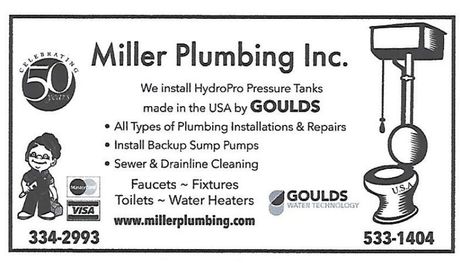Full Service, Family-Owned Plumbing Company in Rush, NY
Also serving the surrounding communities!
We are a full-service, family-owned plumbing company. We service all residential, sewer cleaning, and water heater replacement. Bathroom remodeling is our specialty. No job is too large or too small for us. If you are thinking of remodeling or replacing fixtures or a water heater, we are the ones to call. Check our services for a full listing of the products and services we offer.
The next time you think about remodeling your bathroom or some other plumbing related facility, give us a call. We use only the highest quality parts and fixtures and perform all these services at rates that are competitive with others.
Energy Saving Tips
Weatherization
Cracks or gaps in vulnerable areas like windows, doors, electrical outlets, plumbing penetrations and fireplaces lead to significant home energy loss. These openings can consume up to 40% of your home's heating and cooling energy and can leave your family vulnerable to the elements.
The good news is that it's easy and inexpensive to reduce this leakage. To learn more about prime energy wasting areas and simple, effective do-it-yourself remedies, read our information on caulking, weather stripping, and insulation.
Caulk
Caulk is a pliable material used to fill holes, openings and cracks found where two different materials or parts of a building are joined. Caulking keeps hot air outside your home in the summer and warm air inside your home in the winter.
Areas frequently in need of caulking include:
- Cracks and gaps around windows and doors.
- Cracks beneath baseboards at the bottom of walls.
- Holes where plumbing pipes and telephone wires enter the house.
- Holes around exhaust fans and dryer vents, and where sink and bathtub drains exit the house.
Summer is the best time to caulk. The heat helps the caulk dry quickly and you don't have to worry about your project being interrupted or ruined by a rainstorm.

Weather Stripping
Weather stripping is a narrow strip of material applied around exterior doors and windows. When the windows or doors are closed, the weather stripping is compressed and prevents air from entering or exiting. This can reduce your energy bill by as much as 15%, and cuts down on dirt, dust, noise, moisture, and drafts entering your home around loose-fitting windows and doors.
Weather stripping is available in many forms and materials. For doors and windows used frequently, the best quality materials will provide the best insulation and durability.
Air can also enter and escape from your home through electric outlets installed in the exterior walls. Inexpensive outlet gaskets can be installed to prevent these leaks. Carefully follow the manufacturer's instructions for installation.
Insulating
The areas that benefit most from insulation include:
- Attic floors, doors, ceilings, and walls.
- Exterior walls and walls between heated and unheated spaces.
- Floors over unheated or outside areas.
- Ducts and heating pipes in unheated areas.
- Water heaters, especially in unheated areas. (Most water heaters built after 1978 are already insulated and should not be wrapped. Refer to the manufacturer's specifications.)

TIME-SAVING TIP
If you can’t apply weather stripping right away, use this "quick-fix" solution: block drafty doors or windows with rolled-up bath towels. Stylish door runners are also available, some in holiday designs that can add a festive, seasonal flavor to the decor of your home.
While insulation does not produce hot or cold air, it does prevent it from flowing into or out of your home. By reducing unwanted heat gain, heat loss, and infiltration, insulation makes your home more comfortable and reduces your energy costs at the same time.
Trust our reliable and friendly plumbers for repairs, installations, and more. Schedule an appointment by calling us at (585) 533-1404.











